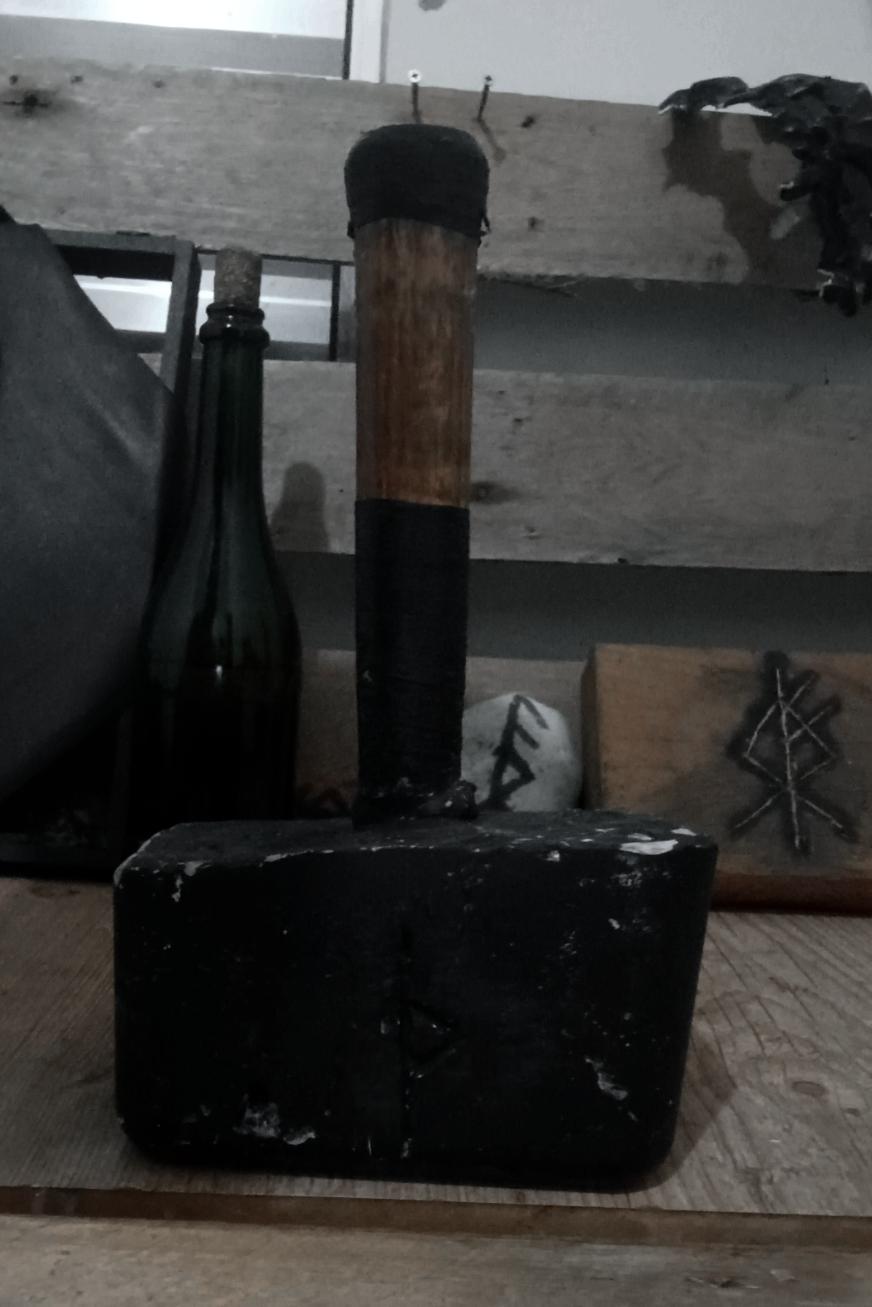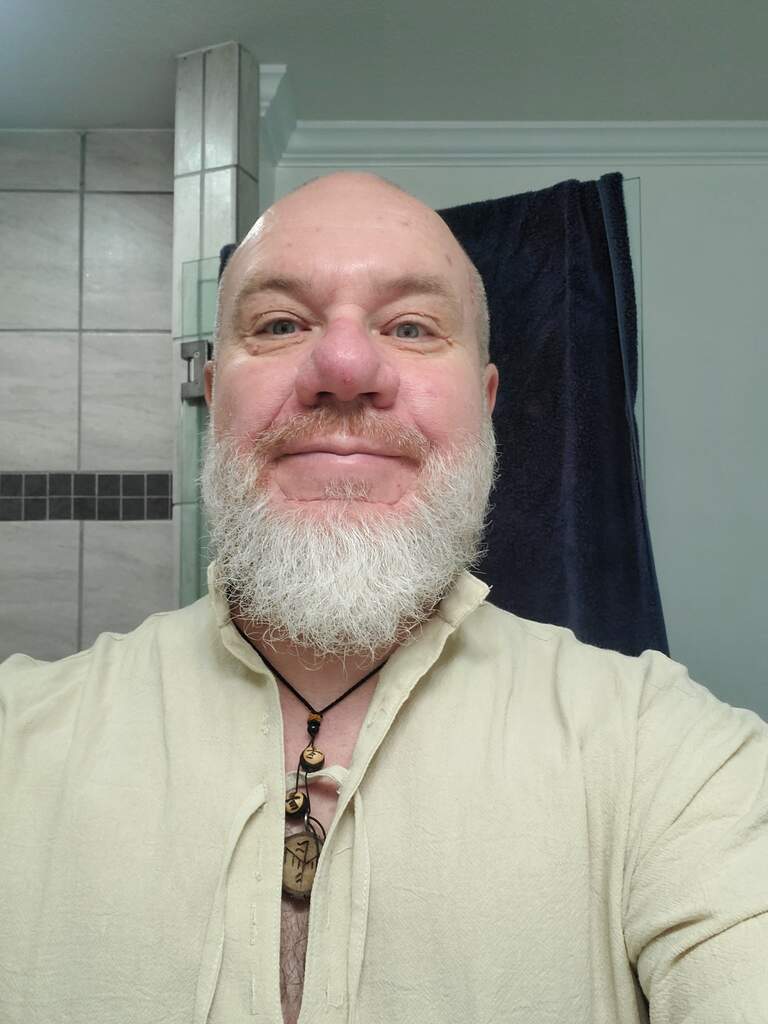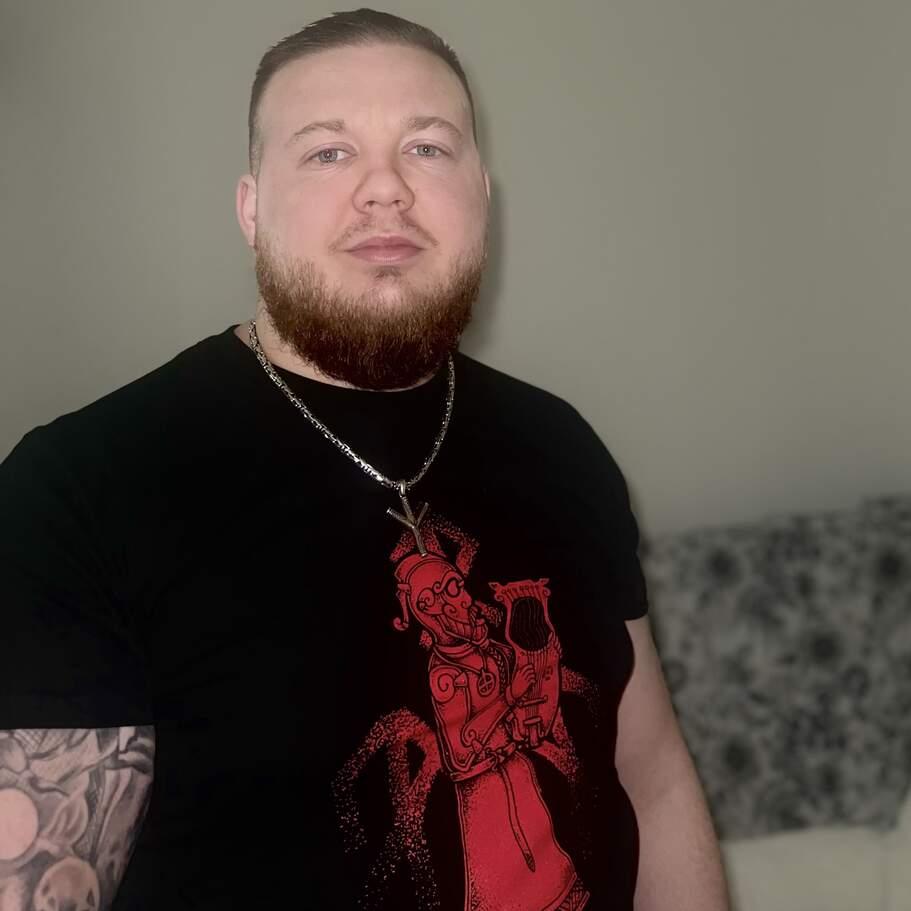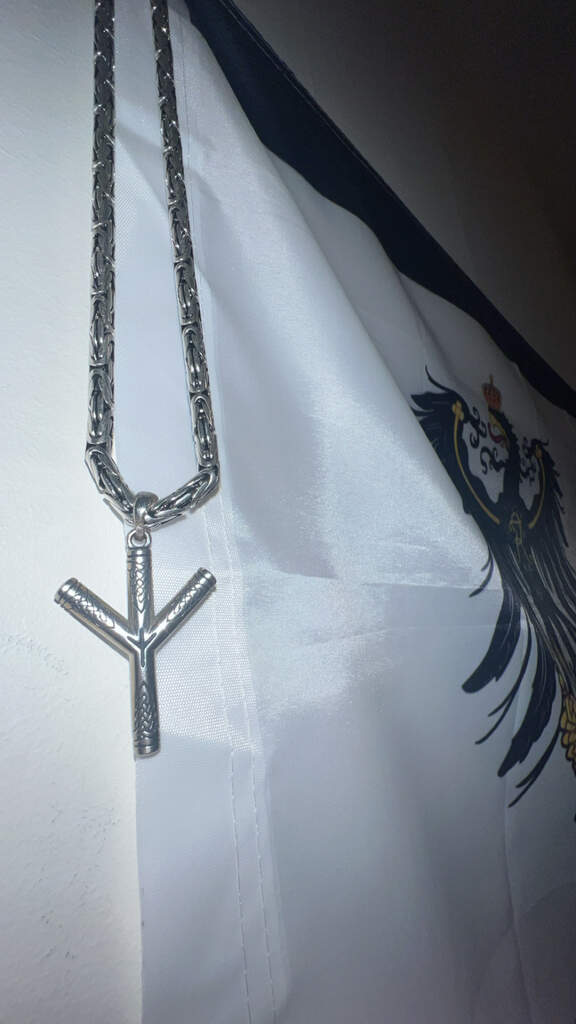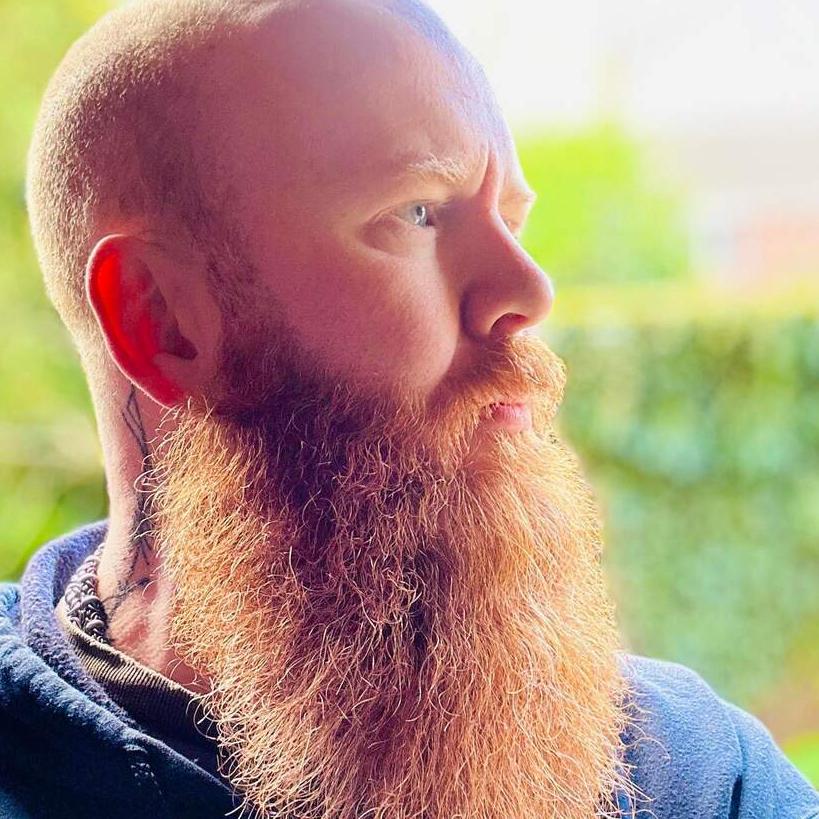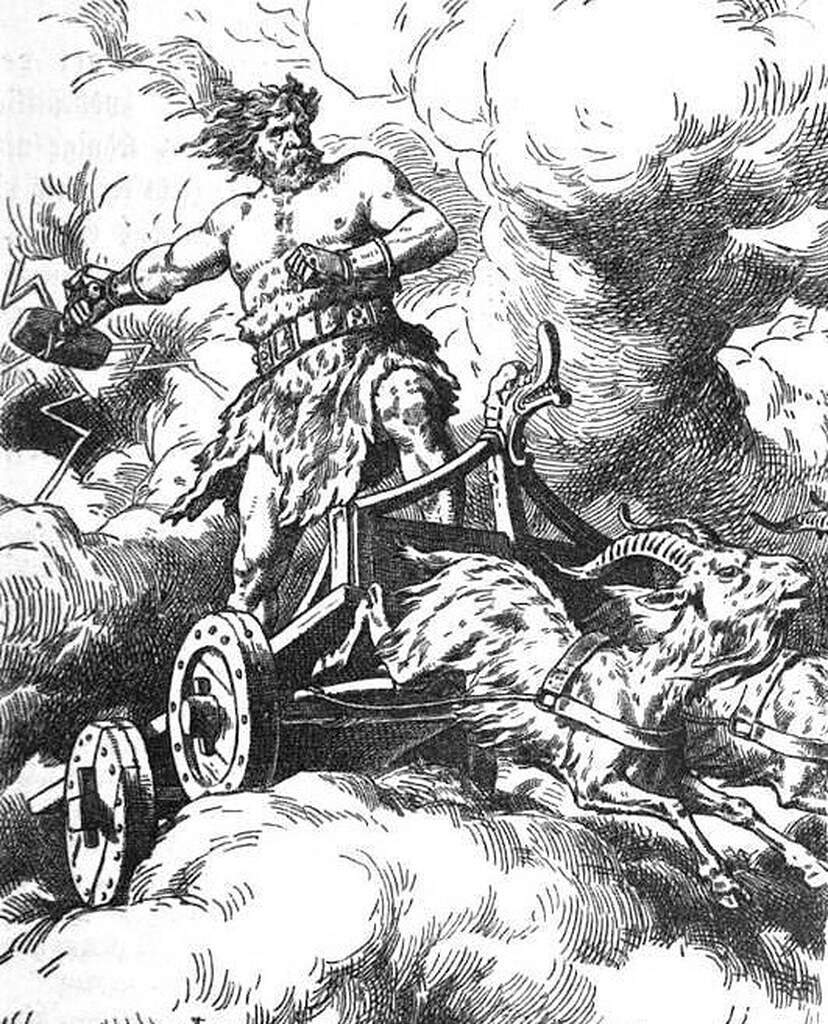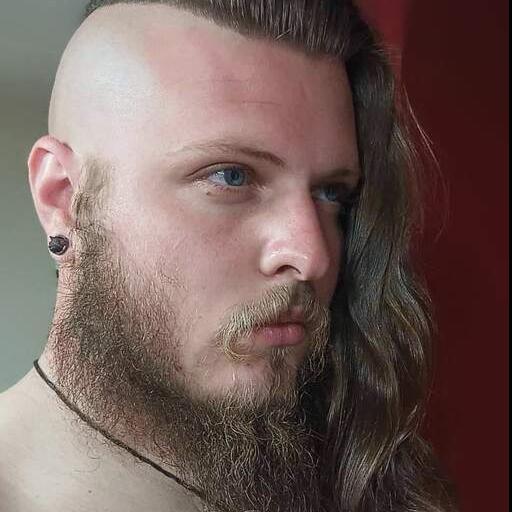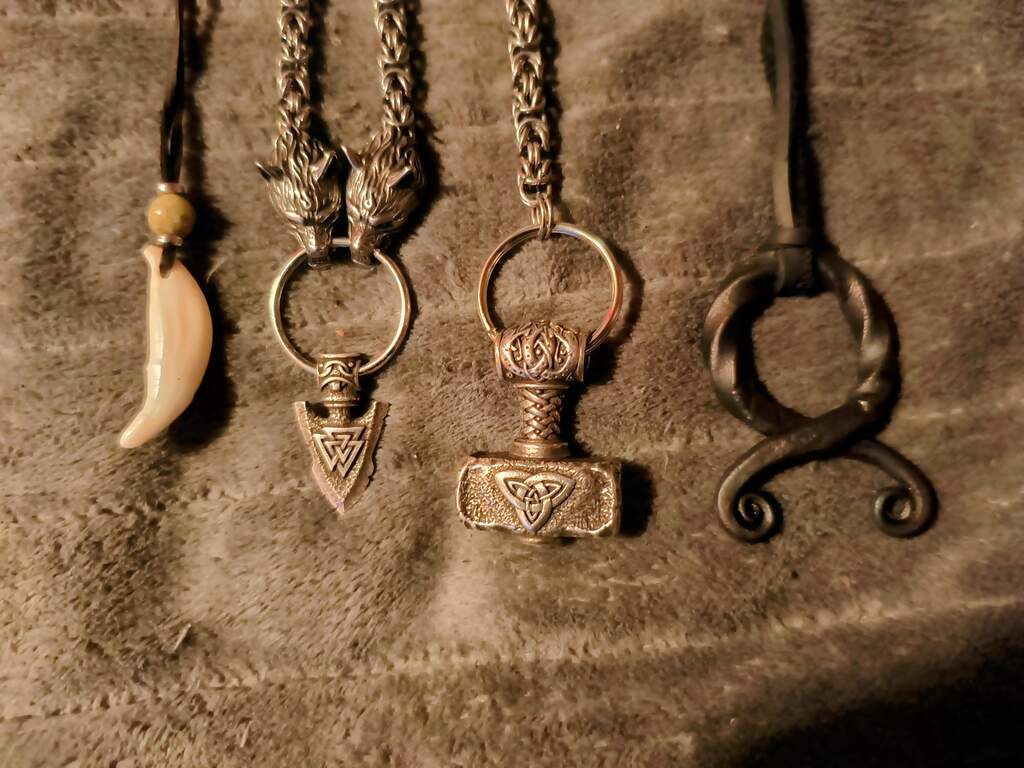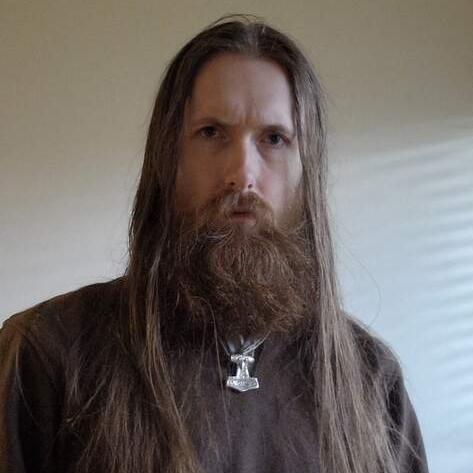O Mjölnir é um dos principais símbolos do paganismo germânico, e ele possuí características e curiosidades:
— A história do Mjölnir é uma das mais interessantes que tem, sendo um dos principais presentes dado pelos anões, filhos de Ivaldi, aos deuses Gaut, Asa-Þórr e Ingvi após várias artimanhas do deus Loki. Odin recebeu a lança Gungnir e o anel multiplicador Draupnir, Freyr - Ingvi recebeu o Javali de ouro Gullinbursti e o navio Skídbladnir, enquanto Asa-Þórr recebeu o martelo Mjölnir que pode-se golpear o quanto quiser que não se destrói, pode arremessar que ele nunca erra o alvo, e pode se lançar tão longe que ele sempre retorna.
— O Mjölnir possui o cabo curto pois em sua última etapa de fabricação o anão filho de Ivaldi foi picado por uma mosca e o cabo ficou pequeno, dessa forma o deus vermelho tem de usar suas luvas de ferro.
— O Mjölnir não é apenas usado por nós e em todas as vertentes do paganismo germânico da nossa era, já era usado no final da idade média quando a cristianização começou entre os nossos ancestrais, para mostrarem sua fé. Isso faz o uso do Mjölnir atemporal.
— O Mjölnir é amplamente achado, verificado, e atestado tanto na literatura, na arqueologia. É encontrado em muitos textos, pedras rúnicas, desenhos rupestres, amuletos e pingentes na Noruega, na Suécia, na Dinamarca são encontrados até hoje, um dos mais famosos é o Amuleto Kvinneby. Não só o Mjölnir sozinho, mas, desenhos, estátuas de Þórr o segurando.
— Muitos dos martelos apresentam todos os detalhes do culto de Rymir e seus atributos:
— O elemento vento detalhado em diversas variações do Mjölnir é encontrado no conto Islandês Rögnvalds þáttr ok Rauðs, onde Asa-Þórr sopra em sua barba para enviar um vento contra Olaf Tryggvason. Já os anéis concêntricos são mais frequentemente encontrados em amuletos do Mjölnir em toda a Escandinávia e na Europa germânica e parecem denotar anéis de tempestade, pois estão principalmente associados a Asa-Þórr. Esses anéis de tempestade são auréolas ao redor do sol ou da lua. A tradição meteorológica antiga detalha que esses anéis de tempestade indicam precipitação (chuva, garoa, tempestade, granizo, neve, etc.). Também poderiam ter sido vistos como um presságio, denotando a presença do deus.
— Os olhos de Þórr são frequentemente apontados na literatura como ardentes e aterrorizantes. Þrymskviða retrata seus olhos como öndótt — aterrorizantes; Þrymr observa que o fogo queima em seus olhos. Em Gylfaginning , quando ele está prestes a atacar o fazendeiro e sua família por mancar a perna de sua cabra, ele diz que pensou que quase desmaiaria só de ver. Húsdrapa retrata os olhos de Thor como œgigeislum – raios de terror, e esses olhos estão gravados em diversos amuletos do Mjölnir.
— Muitos dos amuletos também possuem a face de uma pássaro, águia posicionada no lugar de seus olhos, o que pode vir de uma história perdida associada a Asa-Þórr e uma ave. O único exemplo achado é a história de Þjazi na forma de uma águia de Gylfaginning, que afirma que os deuses o queimaram dentro de seu recinto, mas em Hárbarðsljóð, Thor afirma ter matado Þjazi. Embora Þjazi não tenha nenhuma afinidade particular com o vento.
— Esses símbolos existem nas lanças góticas, bem como em outros amuletos de lança em enterros posteriores, o que indica que houve uma precipitação compartilhada ou elemento de tempestade entre Asa-Þórr e seu pai.
— O uso do Mjölnir está muito longe de ser apenas de uma arma de guerra, indestrutível e com uso a relâmpagos e trovões. O Martelo é usado para consagrar, como escrito em Þrymskviða , que o Mjölnir consagraria a noiva no casamento com o Jottun, que na verdade era o próprio deus disfarçado, além do funeral de Baldur que ele usa o Mjölnir para abençoar o navio. Em Gylfaginning novamente, ele revive suas cabras com o Mjölnir deixando claro que também é uma arma mágica, pois foi fabricado com magia anã muito poderosa. Existem muitos itens de registro arqueológico invocando Thor para a cura, de forma explícita mostrando o Mjölnir. Mais além do uso para batalhas, raios e trovões, abençoar, magia e reviver e cura. O Mjölnir também assume em vários momentos o símbolo de um falo, o Mjölnir também vem representar um falo no mesmo conto da noiva e do casamento, sua posição como entrando numa vulva, descrito no livro A Esposa de Ødin, um dos maiores significados denotando o deus ruivo como deus também da fertilidade!!!
O Mjölnir é um dos principais símbolos do paganismo germânico, e ele possuí características e curiosidades:
— A história do Mjölnir é uma das mais interessantes que tem, sendo um dos principais presentes dado pelos anões, filhos de Ivaldi, aos deuses Gaut, Asa-Þórr e Ingvi após várias artimanhas do deus Loki. Odin recebeu a lança Gungnir e o anel multiplicador Draupnir, Freyr - Ingvi recebeu o Javali de ouro Gullinbursti e o navio Skídbladnir, enquanto Asa-Þórr recebeu o martelo Mjölnir que pode-se golpear o quanto quiser que não se destrói, pode arremessar que ele nunca erra o alvo, e pode se lançar tão longe que ele sempre retorna.
— O Mjölnir possui o cabo curto pois em sua última etapa de fabricação o anão filho de Ivaldi foi picado por uma mosca e o cabo ficou pequeno, dessa forma o deus vermelho tem de usar suas luvas de ferro.
— O Mjölnir não é apenas usado por nós e em todas as vertentes do paganismo germânico da nossa era, já era usado no final da idade média quando a cristianização começou entre os nossos ancestrais, para mostrarem sua fé. Isso faz o uso do Mjölnir atemporal.
— O Mjölnir é amplamente achado, verificado, e atestado tanto na literatura, na arqueologia. É encontrado em muitos textos, pedras rúnicas, desenhos rupestres, amuletos e pingentes na Noruega, na Suécia, na Dinamarca são encontrados até hoje, um dos mais famosos é o Amuleto Kvinneby. Não só o Mjölnir sozinho, mas, desenhos, estátuas de Þórr o segurando.
— Muitos dos martelos apresentam todos os detalhes do culto de Rymir e seus atributos:
— O elemento vento detalhado em diversas variações do Mjölnir é encontrado no conto Islandês Rögnvalds þáttr ok Rauðs, onde Asa-Þórr sopra em sua barba para enviar um vento contra Olaf Tryggvason. Já os anéis concêntricos são mais frequentemente encontrados em amuletos do Mjölnir em toda a Escandinávia e na Europa germânica e parecem denotar anéis de tempestade, pois estão principalmente associados a Asa-Þórr. Esses anéis de tempestade são auréolas ao redor do sol ou da lua. A tradição meteorológica antiga detalha que esses anéis de tempestade indicam precipitação (chuva, garoa, tempestade, granizo, neve, etc.). Também poderiam ter sido vistos como um presságio, denotando a presença do deus.
— Os olhos de Þórr são frequentemente apontados na literatura como ardentes e aterrorizantes. Þrymskviða retrata seus olhos como öndótt — aterrorizantes; Þrymr observa que o fogo queima em seus olhos. Em Gylfaginning , quando ele está prestes a atacar o fazendeiro e sua família por mancar a perna de sua cabra, ele diz que pensou que quase desmaiaria só de ver. Húsdrapa retrata os olhos de Thor como œgigeislum – raios de terror, e esses olhos estão gravados em diversos amuletos do Mjölnir.
— Muitos dos amuletos também possuem a face de uma pássaro, águia posicionada no lugar de seus olhos, o que pode vir de uma história perdida associada a Asa-Þórr e uma ave. O único exemplo achado é a história de Þjazi na forma de uma águia de Gylfaginning, que afirma que os deuses o queimaram dentro de seu recinto, mas em Hárbarðsljóð, Thor afirma ter matado Þjazi. Embora Þjazi não tenha nenhuma afinidade particular com o vento.
— Esses símbolos existem nas lanças góticas, bem como em outros amuletos de lança em enterros posteriores, o que indica que houve uma precipitação compartilhada ou elemento de tempestade entre Asa-Þórr e seu pai.
— O uso do Mjölnir está muito longe de ser apenas de uma arma de guerra, indestrutível e com uso a relâmpagos e trovões. O Martelo é usado para consagrar, como escrito em Þrymskviða , que o Mjölnir consagraria a noiva no casamento com o Jottun, que na verdade era o próprio deus disfarçado, além do funeral de Baldur que ele usa o Mjölnir para abençoar o navio. Em Gylfaginning novamente, ele revive suas cabras com o Mjölnir deixando claro que também é uma arma mágica, pois foi fabricado com magia anã muito poderosa. Existem muitos itens de registro arqueológico invocando Thor para a cura, de forma explícita mostrando o Mjölnir. Mais além do uso para batalhas, raios e trovões, abençoar, magia e reviver e cura. O Mjölnir também assume em vários momentos o símbolo de um falo, o Mjölnir também vem representar um falo no mesmo conto da noiva e do casamento, sua posição como entrando numa vulva, descrito no livro A Esposa de Ødin, um dos maiores significados denotando o deus ruivo como deus também da fertilidade!!!







